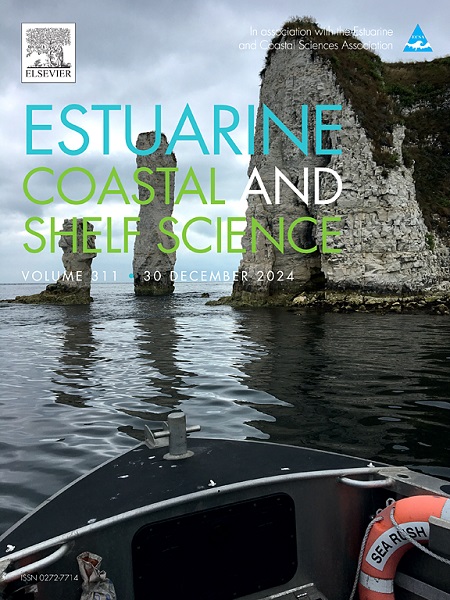Paleo-shoreline changes in the northwestern Persian Gulf during the Holocene
IF 2.6
3区 地球科学
Q1 MARINE & FRESHWATER BIOLOGY
引用次数: 0
Abstract
The Persian Gulf and the fertile plains of Mesopotamia are the subject of archaeological, sedimentological, and sea-level studies for more than two centuries. However, the complex tectonic setting and coastal morphology around the Persian Gulf have led to conflicting estimation of relative sea-level changes in this region during the Holocene. We analyzed the lithological and geochemical characteristics of several sediment cores from the Lower Khuzestan plains, northwest of the Persian Gulf, to reconstruct the regional facies and environmental changes, and eventually sea-level evolution during the Holocene. Our results show that sedimentary environments changed with transgression and regression phases and the migration of paleo-shorelines, forming internal water bodies, wetlands, flood basins, and playas. We find four distinct relative sea level micro-sequences, during the early Holocene until about 9000 years before present (9 ka BP), early to mid-Holocene between about 9 and 7 ka BP, mid-Holocene between 7 and 4 ka BP, and late Holocene since ∼4 ka BP. Maximum sea-level during these micro-sequences reached −10 m above sea-level (masl), −3 masl, +1 masl, and +3 masl, respectively. Our study underscores the role of local sedimentation processes in modulating the effect of relative sea level changes, and ultimately in shaping the Holocene landscape of southeastern Mesopotamia.
全新世期间波斯湾西北部的古海岸线变化
两个多世纪以来,波斯湾和肥沃的美索不达米亚平原一直是考古学、沉积学和海平面研究的主题。然而,波斯湾周围复杂的构造环境和海岸形态导致了对该地区全新世相对海平面变化的相互矛盾的估计。本文分析了波斯湾西北部下胡齐斯坦平原几个沉积物岩心的岩性和地球化学特征,重建了全新世时期的区域相、环境变化和海平面演化。研究结果表明,沉积环境随着海侵、退期和古海岸线的迁移而发生变化,形成了内部水体、湿地、洪泛盆地和playas。我们发现了4个不同的相对海平面微序列,分别是早全新世至距今约9000年(9ka BP),早至中全新世约9 ~ 7ka BP,中全新世7 ~ 4ka BP,以及全新世晚期~ 4ka BP。这些微层序的最高海平面分别达到海拔−10 m、−3 masl、+1 masl和+3 masl。我们的研究强调了局部沉积过程在调节相对海平面变化的影响中的作用,并最终塑造了美索不达米亚东南部全新世景观。
本文章由计算机程序翻译,如有差异,请以英文原文为准。
求助全文
约1分钟内获得全文
求助全文
来源期刊
CiteScore
5.60
自引率
7.10%
发文量
374
审稿时长
9 months
期刊介绍:
Estuarine, Coastal and Shelf Science is an international multidisciplinary journal devoted to the analysis of saline water phenomena ranging from the outer edge of the continental shelf to the upper limits of the tidal zone. The journal provides a unique forum, unifying the multidisciplinary approaches to the study of the oceanography of estuaries, coastal zones, and continental shelf seas. It features original research papers, review papers and short communications treating such disciplines as zoology, botany, geology, sedimentology, physical oceanography.

 求助内容:
求助内容: 应助结果提醒方式:
应助结果提醒方式:


